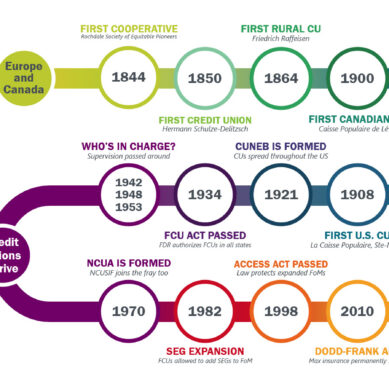When it comes to changing vendors, the decision should come with planning and ensuring all necessary considerations are taken into account. If this is not managed properly, it can impact your members’ overall satisfaction with your credit union, especially when dealing with products used to access your members’ money.
To help your credit union ensure a smooth and successful transition, here are the top three things your credit union should think about when changing vendors.
Evaluate your credit union’s current needs
Before starting your search for a new vendor, the most important step is to evaluate your credit union’s current needs. However, a successful transition begins with a clear understanding of how you feel this change is necessary.
Start by asking yourself questions such as:
- What is prompting the change?
- Are there performance issues that the current vendor is not meeting?
- Have your credit union’s internal processes evolved in a way that your existing vendor can no longer support?
It’s important to ensure the departments that will be impacted by this vendor change are included in the evaluation phase. This is because departments or teams may have different values to bring to the discussion due to their roles in interacting with the vendor. Make sure you are prioritizing which department will be the most impacted, though.
Once your credit union’s needs are fully defined, you can use this information to create a clear set of criteria that will help guide your credit union in the vendor selection process. This criteria list might include things such as your budget, technical capabilities, member support availability, and integration with your existing core systems.
In short, if you don’t have a precise understanding of what your credit union needs, it will be impossible to determine which vendor is best suited to meet those needs. Never go into a meeting without feeling 100% prepared for what you are looking for.
Research and compare vendors carefully
Now that you’ve determined your credit union’s needs, the next step is to begin researching and comparing the potential new vendors. This step is essential to ensure your credit union is not just choosing a vendor that can meet the current needs, but one that can grow with your credit union and support future objectives.
Start by compiling a list of potential vendors. These may come from recommendations from other financial institutions, your credit union’s core processing system, or maybe even through a company that assists in performing an RFP. Once you have the list of vendors you’re considering, make sure to do your due diligence. This involves checking third-party review platforms and forums to gain information, scheduling demos or discovery meetings to get hands-on with the product and get to know the vendor, and looking at the vendor’s track record.
Furthermore, don’t overlook the contract details each vendor has. Review all terms carefully, including service level agreements (SLAs), cancellation clauses, data ownership, transition support, and hidden fees. If needed, involve your legal team to ensure that you’re not entering a contract that could become a liability. These terms can be just as critical as the checks above.
Ultimately, the goal of this step is to gain confidence that the vendor you choose has the right capabilities, reputation, and alignment with your goals. Make sure all your credit union’s needs are being met before you make your final decision.
Plan the transition with precision
Lastly, once your credit union has selected the new vendor, the next step is the most critical phase. When it comes to the transition plan, if you plan poorly, you can find your credit union causing service interruptions, potential lost data, confused staff, and even frustrated members.
Make sure to develop a detailed transition plan that includes the following:
- A realistic timeline with key milestones
- Roles and responsibilities for each department
- Communication strategy for internal staff and your members
- Risk mitigation plans
Creating a transition plan will allow time for training, testing, and troubleshooting with the old vendor. Make sure your credit union has notified all third parties that will be impacted by the vendor change. You never want to assume that everyone will be able to meet your timeline and key milestones.
Keep in mind that it’s best to ensure access to the old vendor sites is available for an interim period after the vendor move, as this will ensure that any sort of overlap or issue that may present itself, your credit union will be able to navigate through. It also gives the new vendor a chance to learn your processes while still having access to the outgoing vendor’s documentation or support.
In many cases, assigning a dedicated project manager can be helpful. This person will be responsible for overseeing the process, coordinating with vendors, managing expectations, and ensuring everyone stays on track within your credit union.
Also, don’t forget to train your staff! Make sure the new vendor provides training, as there could be a learning curve your team will have to navigate. This will help ensure an easy transition to the new vendor software.
Lastly, consider conducting a post-transition session. Once your credit unions have moved to the new vendor, evaluate their performance during the rollout. Were the keystone mile dates met? Were there any issues? What lessons did your credit union staff learn? This will have an overall impact on future vendor changes.
Much to consider
When thinking of changing vendors, remember to evaluate your credit union’s needs, conduct research, and create a transition plan, so that you can help avoid staff confusion and upset members.
The overall end outcome is to improve your credit union’s long-term success. When you take the time to do it right, changing vendors doesn’t have to be disruptive or risky. Instead, it can be a step forward that brings many benefits to your credit union and your members.































































